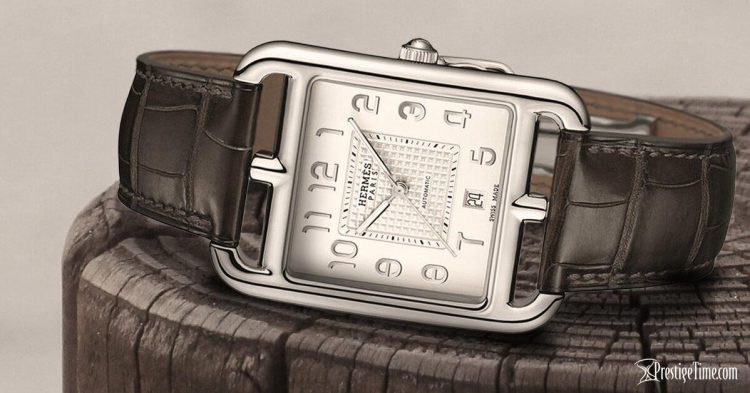Introduction
Hermès, a name synonymous with luxury, artistry, and timeless elegance, is a brand deeply embedded in the fabric of haute couture and high-end accessories. While renowned for its leather goods, scarves, and fragrances, Hermès’ contribution to the world of horology is a story of ingenuity, heritage, and refinement. Unlike traditional Swiss watchmakers, Hermès blends its rich history in craftsmanship with the precision of Swiss watchmaking, creating timepieces that transcend functionality and become wearable art.
This article delves into the captivating history and legacy of Hermès watches, exploring their origins, evolution, iconic collections, and the cultural impact they continue to have in the luxury world.
1. The Origins of Hermès: From Saddlery to Luxury
A Foundation in Leather Craftsmanship
Hermès was founded in 1837 by Thierry Hermès as a harness workshop in Paris, catering to European nobility. The brand’s expertise in crafting high-quality leather goods laid the foundation for its enduring reputation. Over decades, Hermès expanded its portfolio, evolving into a maison of luxury that embodied artistry and exclusivity.
The Transition to Timepieces
The journey into horology began in 1912 when Jacqueline Hermès, the founder’s great-granddaughter, was photographed wearing a leather strap watch designed to secure a pocket watch to her wrist. This simple yet innovative idea marked the beginning of Hermès’ foray into watchmaking, blending its leather craftsmanship with functional design.
2. Establishing a Presence in Watchmaking
The First Hermès Watch
In 1928, Hermès introduced its first branded watch, marking its official entry into the world of horology. These early timepieces were created in collaboration with Swiss watchmakers, combining Hermès’ design sensibilities with Swiss precision. The partnership with the Swiss watch industry ensured that Hermès watches met the highest standards of quality and accuracy.
Expanding Horizons
Throughout the mid-20th century, Hermès expanded its watch collections, emphasizing unique designs and luxurious materials. By the 1970s, the brand had solidified its position as a serious contender in the luxury watch market, offering timepieces that reflected its artistic vision and commitment to excellence.
3. The Evolution of Hermès Watch Collections
Arceau: A Design Revolution
Introduced in 1978, the Arceau collection remains one of Hermès’ most iconic creations. Designed by Henri d’Origny, the watch features asymmetrical lugs inspired by equestrian stirrups, paying homage to the brand’s equestrian heritage. The Arceau’s minimalist yet distinctive design has made it a timeless classic.
Cape Cod: Nautical Elegance
Launched in 1991, the Cape Cod collection was designed by Henri d’Origny with a rectangular case inspired by the Hermès “Chaîne d’Ancre” motif. The collection’s playful elegance and versatility have made it a favorite among collectors and fashion enthusiasts.
Slim d’Hermès: Modern Minimalism
The Slim d’Hermès collection, introduced in 2015, embodies contemporary elegance with its ultra-thin case and minimalist typography. The watch represents Hermès’ ability to combine modern aesthetics with traditional craftsmanship.

4. Swiss Craftsmanship and Innovation
Partnership with Vaucher Manufacture Fleurier
In 2006, Hermès acquired a 25% stake in Vaucher Manufacture Fleurier, a Swiss company known for producing high-end mechanical movements. This partnership enabled Hermès to integrate in-house movements into its timepieces, elevating its position in the luxury watch industry.
Artisanal Techniques
Hermès is renowned for incorporating artisanal techniques such as enamel work, engraving, and gem-setting into its watches. These techniques reflect the brand’s dedication to creating timepieces that are as much works of art as they are functional objects.
Complications and Innovations
Hermès has embraced complications, offering timepieces with moon phases, perpetual calendars, and even unique complications like the “Temps Suspendu,” which allows wearers to “pause” time—a poetic representation of the brand’s creative ethos.
5. Hermès Watches in Popular Culture
A Status Symbol
Hermès watches have become a symbol of understated luxury, often seen on the wrists of celebrities, influencers, and royalty. Their appeal lies in their ability to balance elegance with individuality, making them a coveted accessory for those who value sophistication.
Appearances in Media
Hermès watches have featured prominently in films, fashion shows, and advertising campaigns, reinforcing their image as a symbol of timeless style.
6. Sustainability and Ethical Practices
Commitment to Sustainability
Hermès is committed to sustainable practices, from sourcing ethically produced materials to implementing environmentally friendly manufacturing processes. This commitment extends to its watchmaking, where sustainability is an integral part of its ethos.
Durability and Longevity
Hermès watches are designed to last a lifetime, emphasizing the importance of quality and craftsmanship. This focus on durability aligns with the brand’s philosophy of creating products that transcend trends and stand the test of time.
7. The Future of Hermès Watches
Innovative Designs
As Hermès continues to innovate, it remains dedicated to pushing the boundaries of design and technology. Upcoming collections are expected to feature more advanced complications and creative aesthetics.
Expanding Global Reach
With a growing presence in emerging markets, Hermès watches are poised to reach a broader audience, ensuring their continued relevance in the luxury watch market.
Conclusion
Hermès watches are a testament to the brand’s unwavering commitment to artistry, innovation, and excellence. From its humble beginnings as a saddlery workshop to its current status as a global luxury icon, Hermès has redefined what it means to create a watch. Each timepiece is a celebration of heritage, craftsmanship, and timeless elegance.
In answering the question, “Why does Hermès stand as a pillar of elegance in watchmaking history?” the answer lies in its unique ability to combine tradition with innovation, creating watches that are as culturally significant as they are beautifully crafted. For those who value artistry, luxury, and a connection to history, a Hermès watch is more than just a timepiece—it’s a legacy.





































